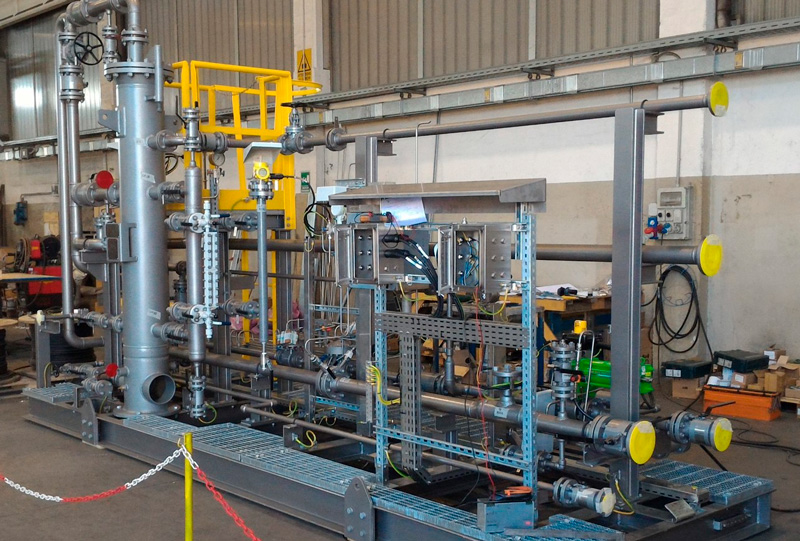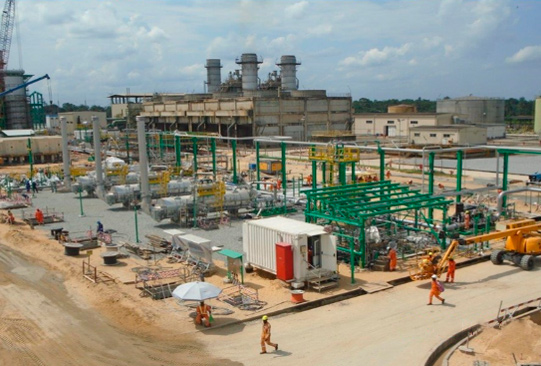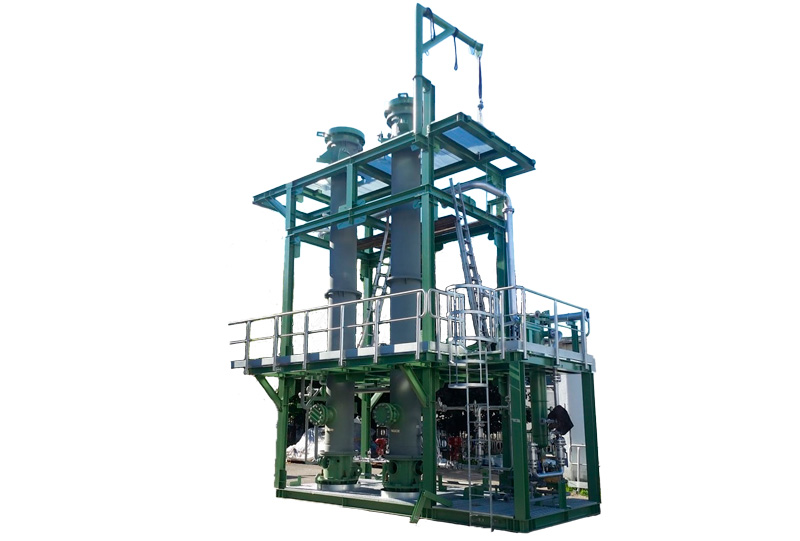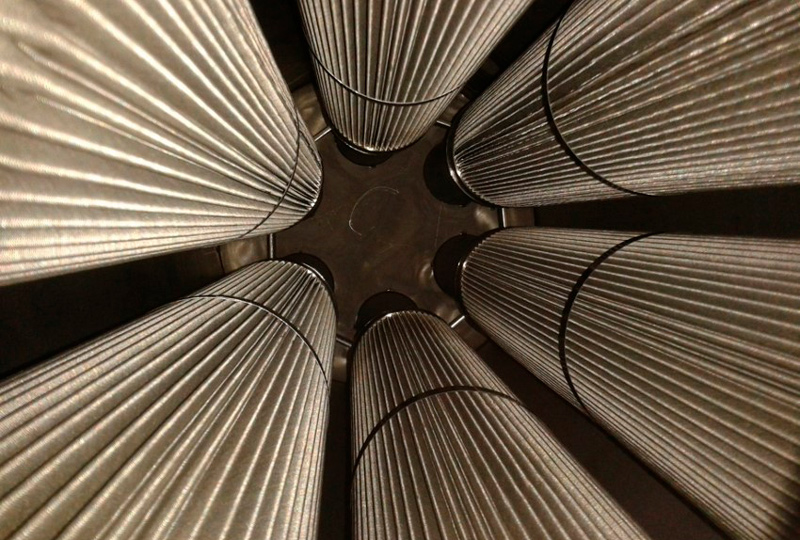Glycol-type (MEG, DEG, TEG) Gas Dehydration Units

Applications
Removal of water from natural gas by adsorption process
Basic Process Description
The feed gas is introduced to the bottom of the contactor column where it contacts counter-currently with the lean glycol which is fed to the top of the contactor column. The contacting device may be trays or packing type. The lean glycol absorbs the water from the treated gas and this rich glycol is then regenerated in the glycol regeneration section with the water releases. The rich glycol leaving the contactor bottom is loaded with water and dissolved hydrocarbons. It is flashed to an intermediate pressure under level control and is pre-heated through the glycol condenser which is an integral part of the still column. Rich glycol then passes to the glycol flash drum. This drum comprises internals that allows skimming of hydrocarbons. The rich glycol leaving the flash drum is filtered in cartridge filters to remove solid particles and then in activated carbon filter to avoid heavy hydrocarbons build-up in the glycol system. The glycol then flows to the still column after pre-heating in the lean/rich glycol heat exchanger. The still column has an integral reboiler where the glycol is heated by an electric, fired gas or hot oil heater. Reflux for the column is provided by the integral glycol condenser using the rich glycol from the contactor as condensing medium; in some application, external vapour condenser and separator may be provided to minimize the water and glycol contents in the outlet stream. Still column overhead off-gas is sent to the plan. To produce glycol at the required purity, fuel gas is preheated in a coil in the reboiler and supplied to the glycol stripping column. The lean glycol from stripping column bottom is sent to the glycol surge drum. From the glycol surge drum, via the lean/rich glycol heat exchanger, the glycol is pumped back from the glycol recirculation pumps to the contactor column through the glycol cooler.
The unit is completed with interconnecting piping, valves, steelworks, instrumentation and control systems.
Depending upon the extension of the scope of supply, the gas dehydration section may be provided with additional inlet and outlet conditioning facilities (cooling, separation, filtration). Even the glycol regeneration section may be provided with pH control, corrosion inhibitor and antifoam injection systems, glycol drainage system and glycol make-up system.












